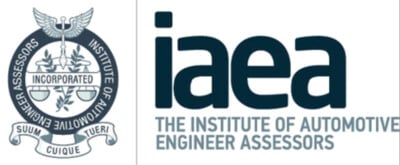ASSESSOR SUMMER 2025 FULL MAGAZINE v2 - Flipbook - Page 27

varioguard barriers designed to contain
the crash.
Professor James Brighton and his team
create a high-speed multi-vehicle crash
involving eight different vehicles and
30-ton HGV coming into their lane
head on.
The range of vehicles that will be
driven at motorway speeds each have
a different size, weight, wheelbase, and
engine layout, that will take part in the
pile up include:
else can bene昀椀t from it. Automotive
manufacturers would love to be able to
design against multiple impacts for one
vehicle. It’s dif昀椀cult, though, because
you can’t have an airbag deploy twice.
The seatbelt in conjunction with the
airbag is really the best combination.
And then from there, the safety
structures of the vehicle, keeping the
occupant compartment intact.”
•
A high-performance hatchback, a
Volkswagen Golf GTI from 2009
The 昀椀nal part of the experiment tests
crash investigators. Marcus Rowe, a
crash investigator, is let loose on the
scene. His job, having not witnessed
the crash, is to 昀椀gure out what
happened using crash forensics. This
experiment will reveal how accurate
current accident analysis really is, and
how it can be improved to make roads
safer for all of us.
•
A pick-up truck, and a US favourite
– the Ford F-150
THE PUBLIC
•
A pioneer of the hybrid era, 2012
Toyota Prius
•
A convertible, a mid-engine
Porsche Boxter series 1
•
An Executive Saloon car, the
Audi A8
•
A people carrier, the 8 seat Dodge
Grand Caravan
•
A sport utility vehicle, the
Mercedes ML
•
the crash, including a freak one in a
million occurrence of one car careering
under the lorry.
Crumple zones work – despite a
massive rear shunt from a white van,
the Prius electric battery remained
intact thanks to crumple zones. Others’
lives were saved by them.
Air bags might not deploy depending
on where the vehicle is hit, leading to
disastrous consequences.
Safety systems struggle with multiple
impacts – crumple zones and airbags
in the Dodge did little after the 昀椀rst or
second impact.
A panicked driver isn’t rational –
despite coming to a stop safely, one of
the drivers then accelerated into the
lorry.
High driving position enables earlier
response to events ahead – as shown
by the measured braking of the utility
vehicle.
The hard shoulder is a dangerous place
to be – any drivers or passengers in the
cars on our hard shoulder would most
likely have lost their lives.
JOURNAL
And no motorway scene would be
complete without a white van… in
this case a Vauxhall Vivaro.
To stage such an incident and keep
everyone safe requires cutting-edge
immersive remote-control driving
technology. Track cars are controlled
from remote ‘pods’.
Four members of the public, selected
to represent a cross-section of road
users, join four of James Brighton’s
team, each controlling real cars via
the pods. As they drive as a pack at
motorway speeds, a lorry driving the
opposite direction swerves across the
central reservation into their lanes. A
pile up is inevitable.
Over 90 cameras, go-pros and drones
capture the resulting crash. Black boxes
昀椀xed to the track cars record vehicle
data and driver responses. Cameras
record the drivers’ reactions. Not one
car is left unscathed after the crash.
Some are barely recognisable. But who
would have survived the crash and
why?
US crash analysis expert, Dr Janet
Bahouth will evaluate how the cars
and their safety systems perform,
she said: “My main interest will be
looking at the damage of the vehicle
and to see how that in昀氀uenced the
survivability of the crash and learn
from that so that tomorrow somebody
To make the pile up as realistic as
possible, and to capture genuine
reactions, the four selected drivers will
be members of the public who have
no knowledge of the true nature of
the experiment. All four believe they
are taking part in an experiment to
improve motorway safety and advance
their driving. They are unaware that
they will soon be involved in a high
speed multi car pile-up.
They are:
Caitlyn, 19, health care assistant
from Liverpool
Luke, 26, construction worker
from Brighton
Head to @Channel4Documentaries
on YouTube to watch a short video clip
and 昀椀nd the full report via: channel4.
com/programmes/pile-up-worldsbiggest-crash-test
FAST FACTS
• In 2020, nearly 20% of all
motorists killed in the UK died
in crashes involving three or
more vehicles…also known as
a pile up
Lynn, 66, grandmother from
Rochdale
• Someone is killed or injured on
British roads every 17 minutes
Tito, 57, surfer, originally from
San Diego and now lives in Glasgow.
• Almost 75,000 car users were
injured on UK roads in 2022, and
nearly 800 car occupants died
THE FINDINGS
• 45% of UK drivers exceed the
speed limit on British motorways
and 24% of fatal crashes involve
speeding drivers
While all experts recognise this is a
one-off experiment, the crash threw up
interesting results:
Crash forensic investigation is highly
accurate. The team managed to
pinpoint extraordinary details about
www.iaea-online.org/news/the-assessor | SUMMER 2025 | THE ASSESSORS JOURNAL
• 24% of drivers who die on
British roads aren’t wearing
seatbelts.
27